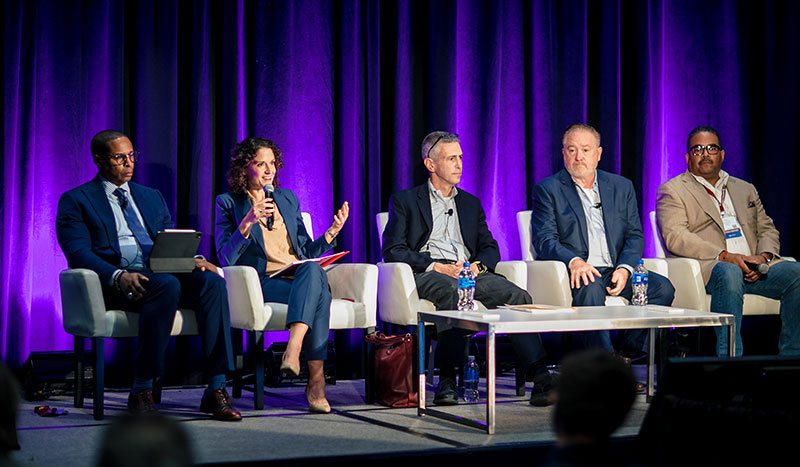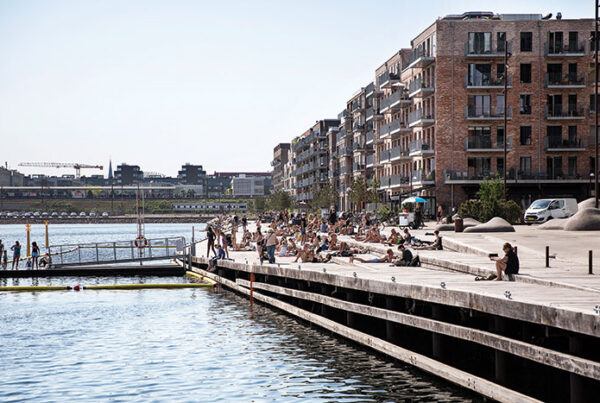
From left to right: Charlton Hamer, senior vice president , Habitat Group; Marissa Novara, Commissioner, Department of Housing, City of Chicago; Bruce Sorota, senior vice president, Stratford Capital Group; director of development; and Philip Beckham, principal, P3 Markets, speaking at the 2021 ULI Fall Meeting in Chicago.
The success of Chicago’s push in recent years to support development near public transit had a problem, according to Charlton Hamer, senior vice president of local developer Habitat Affordable Group: the popularity of the new projects created inequity because many people could not afford to live in them.
Hamer’s firm is leading development of a project that aims to close that affordability gap, a so-called equity transit-oriented development, or eTOD. Success requires public/private cooperation, challenging financing, and community support, according to a panel discussion titled “Can eTOD’s Holistic Approach Help Solve a City’s Affordable Housing Problem?”, moderated by Hamer at the ULI Fall Meeting.
Beginning in 2013, the city of Chicago provided increasingly generous incentives for TODs, including provisions for greater density and less parking. But that push had unequal results, with neighborhoods on the wealthy North and West Sides seeing successful new projects but the less affluent South Side left behind. Panelist Marisa Novara, Chicago’s housing commissioner, said the city has actively pushed for more eTODs in the past two years, offering even more density in return for affordability. This past June, the city adopted a policy plan that included support for eTODs.
Panelists focused discussion on 43 Green, a mixed-income, mixed-use building that will sit next to a Green Line station of the city’s L system. Construction on the long-vacant, city-owned lot in the South Side’s Bronzeville neighborhood is set to start this year. The building, part of a multi-phase, $100 million project, will have about 100 apartments, half affordable and half market rate, plus ground-floor retail space.
The project’s mixed-income aspect presented financing challenges, according to panelist Bruce Sorota, senior vice president of Stratford Capital Group. Most investors in affordable projects prefer 100 percent low-income buildings with no market-rate component. (Chicago supported low-income tax credits for 43 Green.) Sorota said 43 Green overcame that barrier with high-quality design, “tremendous support” from the city, and close cooperation with Fifth Third Bank, which was eager to make Chicago investments following a recent merger.
To build community support, Habitat worked with development partner P3 Markets, particularly its principal, panelist Philip Beckham, a third-generation Bronzeville resident. Beckham for some time had been advocating development of the vacant land. Panelist Jeffrey Head, vice president of development for Habitat, recalled that when he first met Beckham, he walked the team through the neighborhood and presented a vision “of tying the future and past together” with a transit-oriented development that honored the area’s Black history.
Beckham said he sells community members on the TOD concept by reminding them that they travel to other parts of the city for restaurants, shopping, and entertainment. He said, “We take our money to other TODs.”



